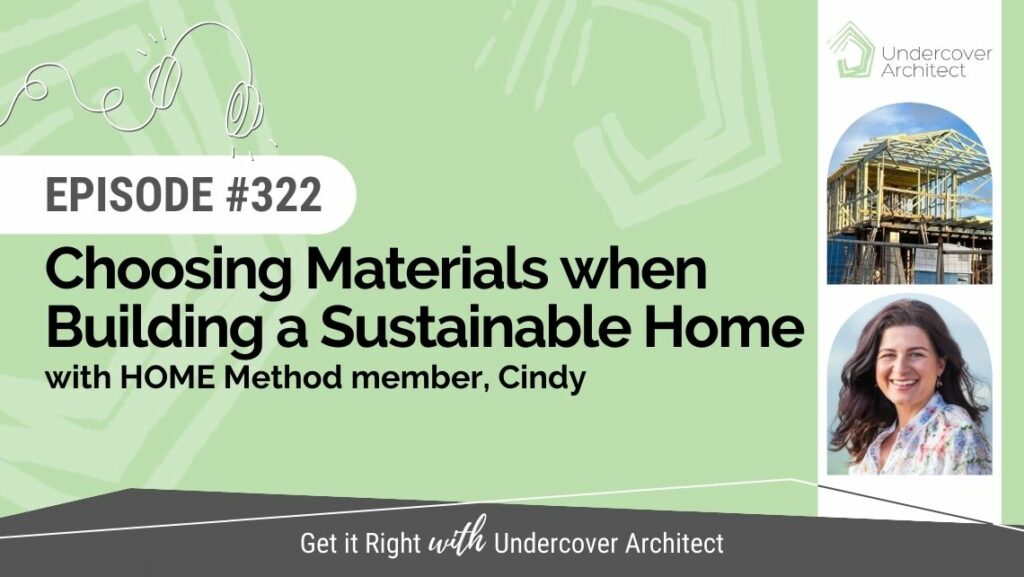
Choosing materials when building a sustainable home is key to achieving your overall goals, but can be challenging.
For Cindy, she had clear sustainability goals, whilst needing to navigate living in a regional location where her preferred products and materials were not always readily available.
Listen to the episode now.
Hello! This is Episode 322, and in it, I continue my conversation with Cindy about building her new home on the NSW coast.
Cindy is a HOME Method member, as well as a qualified Thermal Performance Assessor helping homeowners in her business, Consciously.
If you haven’t listened to part 1 of my conversation with Cindy, I’d encourage you to head back to Episode 321 now so you can listen to that first. You’ll find that at www.undercoverarchitect.com/321.
In this episode, you’ll hear more about CIndy’s project. She talks about how she established her criteria for material selection and what that’s meant in doing a project in a regional area.
LISTEN TO THE EPISODE NOW
She also talks through her window selection, as well as the modelling of her home both from a visualisation point of view, and in testing energy performance.
And she shares with us how construction has been progressing, and how she’s navigated her relationship with her builder on site.
Before we jump in, here’s a reminder for the timing for context.
Cindy joined HOME Method in October 2021. This conversation about the first part of her project happened early 2024, and her home is due to be finished in late 2024.
We finished up Part 1 with Cindy talking about her relationship with her builder, and having that early involvement with him during pre-construction so they could iron out the kinks, streamline their communication, get to know each other, and get that buildability input on the design before construction commenced.
We kick off Part 2 with discussions about material selection, and how Cindy maintained alignment with her sustainability goals.
Here’s Part 2 of my conversation with Cindy.
Now, let’s dive in!
This is the transcript of my conversation with Cindy about designing and building her new home with family and sustainability in mind.
Amelia Lee
Now, can you talk through with me, you’ve talked a lot about how important designing for climate, getting the energy efficiency right… Obviously, there was a meeting of minds with your builder in terms of the fact that it sounds like he’d been waiting for somebody like you to walk into his office to say, “Yes, I want to do this kind of project.” How did that translate to then also the selection of things like your glazing and your building materials, and then the other detail finishes and fixtures? And also living where you live, you’re obviously not in an urban location where you’ve got trade centres and materials suppliers on your doorstep, how are you balancing finding out about those products, knowing what could come to site and navigating all of that together as you made decisions about all of your materials, fixtures and finishes?
Testing out selections in the sunlight [SOURCE]
Cindy
Yeah, that was a big one, and there’s probably two parts to that, the windows and then the building materials. So I’ll start with the building materials. Very early on, we really wanted to make sure that we were sourcing as locally as possible, which is challenging when you’re in a regional centre and you don’t have access to a whole lot of stuff. So you kind of got to weigh it up, and sometimes you got to go outside of the area to get a product that is going to meet the energy efficiency targets and all that kind of thing. So I spend hours researching materials and where they come from, and how healthy they are, and low tox, all that kind of thing. And I’m still doing it, to be honest. So finding a locally sourced stone cladding, whilst there might not be anything in this particular area, I can at least get some from Australia and get that shipped down. So the builder and his team are very open to me specifying in particular what we’re after. And I’ll always sanity check that in terms of cost, whether it’s something that they’re happy to take on and order, he’s comfortable actually using this material. Because at the end of the day, he’s the one that’s going to provide the warranty on these things, and I’m very conscious of that. So I’ll give him lots of options and tell him what I would prefer, but at the end of the day, he needs to be comfortable with that. So yeah, it’s been a lot of research with the materials. And yes, we have had to go outside of the region to get quite a lot of stuff. But you just add to the carbon mortgage, and pay that off with some solar and whatever out. There’s so many other things that we’re doing with this project to try and bring all of that down. So that’s the materials part.
Windows, I spent 12 months on windows. And I think that was also because of the thermal efficiency training that I did, and then getting access to being able to model it myself, I could test out windows specs to the nth degree. And I did. And windows are a challenge sometimes, they’re a science unto themselves. And there’s just so much to know and to learn about them, and different suppliers talk about them differently. And yeah, all that sort of thing. So we really, really, really tried to have a local supplier do the windows that we needed, but at the end of the day, double glazing is still not used as commonly up here. So we ended up sourcing them from Sydney, and we got them shipped up. But we had worked with the window supplier for a good six months, and she was amazing with all of my questions. So yeah.
Amelia Lee
Who did you end up using?
Cindy
Rylock. Rylock Windows. And they’re beautiful, they’re lovely windows, and they’ll hopefully be in a couple of months.
Upstairs windows have been installed [SOURCE]
Amelia Lee
I think what’s really commendable in that is that the supplier was willing to be along that journey with you, of you getting the detail that you needed to feel confident you’re making the right selection. That always bodes well that a supplier is willing to come to the party like that and understand that their demonstration that their product is going to work in the way that you want it to is valuable to you. And you’re so right, you’ve had a very clear understanding that I’ve got to get this thermal envelope sorted, like this is going to be the difference between me having a house that works climatically and one that doesn’t. And also, you know a lot because of your training so I can imagine you really dived into the weeds of a lot of detail that many people wouldn’t.
Cindy
Completely nerded out. Yeah, crazy.
Amelia Lee
Which is fantastic, absolutely fantastic. There’s clearly a reason it’s going to help you help others. I think it’s awesome.
Cindy
I think that that was also part of our cost analysis as well, we were very aware of spending the money on things that couldn’t be changed down the track. So making sure that that thermal envelope was right, and investing the money in making sure that was done right and as best as it could be. And everything else can be changed down the track.
Amelia Lee
Yeah, and I think too, what’s clear as well, we talk about it in HOME Method that no material or product is going to tick every box on the sustainability matrix. You’ve got to figure out what sustainability means to you in terms of recyclability, low carbon footprint, low tox, locally made, all of these kinds of things, and figure out what your priorities are. And for you, I can hear that you’ve had clear you wanting to source locally as much as possible. And there was that conversation that we were having in the Facebook group the other day about the stone benchtop, looking at a stone selection for the kitchen and finding a locally quarried stone. But the fact that they quarry it here, but they send it overseas to process it, and then it flies back as it’s processed self, and so how do you then think about the carbon footprint of that versus sourcing from somebody overseas where it’s only got to travel once but you don’t necessarily know the ethics of the way it was quarried or the business values and those kinds of things.
So that’s the thing, you can get really tied up with some of this stuff. And I often get asked, “Can’t you just give me a big list of all the selections I should make?” And it’s like, “No, because it’s not going to speak to your own personal values, and what’s meaningful for you.” And what I love is just how you’ve dug into the detail of it so that you can see where this stuff aligns with you. And then when you know that you can’t make a choice that ticks all of your boxes, you’ve also reconciled that fact through the investigations that you’ve done, so you haven’t just chosen it blindly. You’ve gone, “Well, we know that this is going to do this and this.”
And I think we were chatting in the Facebook group about somebody like Joost Bakker, whose primary goal is that the whole building can be recycled at its end of life. So he is sourcing windows from overseas. And I remember saying to him, “Are you not concerned about the carbon footprint of those windows travelling such a distance when you do have local suppliers?” And I know he does, he has found local suppliers now, but back when he was doing earlier projects, he couldn’t. And he was like, “No, because if this product can keep getting recycled, and recycled and recycled, that importing carbon is really miniscule in the grand scheme of things.” So it is trying to really think about it and weigh all those things up. So I love that you’ve done that so conscientiously in your project.
And so you’ve started construction, so where are you at in terms of the stage that you’re at in construction? And is there anything that you can share in terms of how construction has felt for you generally, in terms of navigating your experience and, I suppose, how its measured up to all of this work that you’ve been investing and effort and time and money, because you invested in HOME Method and you’ve invested in your learning in other ways… How has construction measured up to what you’re envisaging?
Cindy
Yeah, so we are at framing stage. It’s a two story home, so we’re at second story framing at this point. And we started, I think, I was looking at dates yesterday in preparation for this, we started construction in October last year. So there’s gaps in between and there’s been a delay.
Second floor framing [SOURCE]
Amelia Lee
A very wet summer.
Cindy
And a wet summer, yeah. Even though it was meant to be nice and dry.
Amelia Lee
I know, you sound like every builder up and down the eastern seaboard of Australia. “It’s supposed to be dry.”
Cindy
Yeah, so it’s okay. And there’s been delays with engineering plans and sourcing some trades and that kind of stuff, but I think we’ve got the luxury of not having a set deadline for when we want this house to be done by. We’d love to be in by next Christmas, everybody says that. So we’re not completely attached to a timeframe, and I think that takes an enormous amount of stress off. And when we do come across those hurdles, as I said before, it’s a very collaborative process. It’s very transparent, if I’m not feeling okay about something or the way things are progressing, we can talk about it. There’s never a bad question. And I’ve also said to him, because I’m on site quite regularly, and he expects me to be there because there’s so many questions to ask still. I’ve said, “If I’m here too often, or if I’m overstepping my bounds in some way”, he can tell me that. So we’ve got a very open and transparent relationship on site, which is great.
But in terms of watching it come up out of the ground and then walking through the frame has been amazing. It’s just been so great to see those lines from the page become walls and walk through it and actually go “Yes, that’s exactly how I envisaged this would feel, and the spaces feel right.” And then from here, I can move more into the finishes and making it look pretty, and all that kind of thing on the inside. So it’s been very much focused on that external shell for a while, space planning and stuff has happened for the inside, but in terms of interior design and that kind of thing, that’s my next phase.
Amelia Lee
And what software did you do your drawings and documentation in?
Cindy
So I did the drawings and documentation in Revit, because I still had student access to Revit for that year. That has expired now, unfortunately, and it’s a very expensive product to subscribe to as an individual. So I had to make that choice last year, November last year, just before Christmas, I needed to put together the lighting and electrical plan. And it was either do I train myself in the detail of how to do that in Revit and keep paying this increasing subscription, or do I look at a different product. And I’ve actually switched now to SketchUp, and I’m learning the details of SketchUp now and it’s great, I love it. I don’t think I’ll ever draft my own plans again, that took a lot of time, but SketchUp which allows me to at least design the spaces and the walls, and communicate as much as is needed from a design perspective, and then hand that over to a draftsperson. So I think that’s what I will do going forward.
Learning to model in SketchUp [SOURCE]
Amelia Lee
Revit would’ve allowed you to be able to generate 3Ds and walkthroughs and things like that. So did you find that that was super helpful for you in terms of visualising, I mean, I imagine that you already have some skill in terms of drawing a line on a page and understanding what that’s going to look like in 3D, but did you find that that experience of being able to test those ideas in the model in the computer helpful for you?
Cindy
Yeah, absolutely vital. I’m a very visual person, and so is my husband. So I trained in AutoCAD as well, but it’s 2D, very flat, and it’s very hard to visualise how the spaces will feel just from that. So when I first started the project, I had the choice from AutoCAD or Revit. And it was a no brainer, Revit gave you that 3D aspect, which was important in communicating what I was doing to Shane, and for him to be able to see what those spaces would feel like as well. So yeah, 3D, definitely.
Amelia Lee
Yeah, you kind of get to build it in the computer before it gets built on site. So I know that when clients are working with somebody who uses 3D CAD software, if they use it really effectively, they are really testing a lot of constructability ideas in a computer sense before those things have to be done for real on site. So it’s hugely beneficial if you’re somebody who can’t visualise things, and you need to be able to walk through spaces virtually. And it’s also beneficial for understanding how your building is going to be put together to be able to test that out. And if you’re working with a builder collaboratively, for the designer and the builder to be sitting there and going, “Look, we could do this or we could do that,” and the builder goes, “Actually, well if we do that, we’re not going to need scaffolding for as long or we’re going to be able to get that material on site faster”, and all that kind of stuff is super helpful as well. And did you test things like the sun angles and seeing shadows and where all of that came in as well as you were using the Revit tool?
Cindy
Yeah, that was one of the first things I did. So I’m a perpetual student so it’s very rare that I’m not studying something. And often there’s multiple things going on.
Amelia Lee
I feel you, I am the same.
Cindy
Perfect industry to be in, it’s amazing. Just on perpetual learning, it’s great. So I did a couple of units on sustainability with the University of Tasmania.
Amelia Lee
There’s a few HOME Method members that have done that course, yeah.
Cindy
So good. Sustainable design for houses, and then there was a sustainable design for houses and landscaping, and the big takeaway that I took from that was the climate study. So actually putting together a full climate study of a site, and that being site specific. I learned that before I started doing thermal efficiency so it was the first thing I did when we got this block. I think that, combined with the site survey, that just gave me the template to work from. So yeah, that was great. And then once I actually built the design, and built it up in 3D, I was able to use those sun angles and things in Revit to test out whether that actually worked out the way I thought it would.
Amelia Lee
Yeah, I love it. And what’s interesting is because you joined HOME Method during that design process, but you already had all of this knowledge. A lot of people don’t have that in-depth knowledge of those things, they arrive in HOME Method, and that’s where they learn it. You already had that knowledge arrived at HOME Method, how did you find HOME Method then overlaid on that in terms of, I suppose, supporting you or navigating then continuing on your project in that way, working in partnership? That’s great knowledge to have, and it’s not what a lot of homeowners have when they’re diving into their projects.
Cindy
Yeah, all of the stuff that I’ve done previously, it gave me a really good basis of knowledge. And I felt really confident that I could do the design, but I lacked that practical experience and 20 years of architecture knowledge that we get from being part of HOME Method and that access to your expertise on a regular basis, and being able to ask questions, and learn from everybody else’s questions. It filled so many gaps for me, and it filled gaps in my knowledge, but then it gave me the confidence to explore other things as well and to ask a lot of questions of the people that I was working with. And, yeah, I couldn’t have done what I’ve done and got to where I am without those gaps being filled the way they were, and just that ongoing support is vital. It could be just a question about has anybody used this particular material, what do you think? Or whether you’ve used that and your experience? Or it could be me just having a bit of an event, like I did the other day about the fact that I found this stone that I thought was brilliant and turns out wasn’t really what I expected. So it’s nice being able to have those kinds of discussions and have that support with other people that are having very similar experiences. And you just don’t feel silly about it, it’s great.
Concrete pouring on the pool [SOURCE]
Amelia Lee
Yeah, I’ve had other people say to me, it’s just really good to come to a place where all anybody wants to talk about is building or renovating because my friends are certainly sick of it.
Cindy
Very true. It’s rare to find a community, I think, like that where you can ask whatever you want and you don’t feel silly in doing that. And it’s always respected, it’s always met with knowledgeable answers. So yeah, it’s gold.
Amelia Lee
Yeah. Oh, you’re an amazing bunch in that community. Everybody operates from a place of generosity, and yeah, there is so much knowledge in that group, it’s just amazing. I just love that HOME Method community. It’s just awesome.
Cindy
It’s one of the only reasons I’m still on Facebook, to be honest.
Amelia Lee
Now, you are clearly a very upbeat, optimistic, positive person, and renovating and building tests the strongest of mindsets. How have you navigated managing your mindset through this process, through doing something so personal? It’s one thing when you’re doing a personal home that represents a whole heap of stuff in terms of memories and future vision and all that kind of stuff, but you’re also adding to the cocktail that you have a professional tilt on this. And everybody expects that when somebody designs their own home and they’re in the industry in some way, shape, or form, that all of a sudden, it’s going to be the ultimate vision, so there’s all that added, I suppose, layer on it. How have you managed your mindset and your stress and your thinking through all of this in terms of how you’ve navigated your project and dealt with those hiccups and hurdles along the way?
Cindy
Yeah, good question. I think that’s multifaceted. And it has been a real challenge to wear those different hats along the way. I’ve got the designer hat, I’ve got the owner hat, I’ve got the project management hat, I’ve got the thermal assessment hat. Depending on the day, depends on how many hats I’m wearing, and where I’m coming at it from. So I think early on, it was being okay with that, and realising what perspective I was putting on things at any given time, that was important to manage those stress levels. I think it’s been pretty smooth so far. There’s always hiccups along the way, I think there was a few months there with dealing with the TPAs, different assessments and that kind of stuff that was coming back, I found that very stressful. And my husband remembers that well.
Amelia Lee
There was also that hiccup that you hit with the engineer, and them not being available to get that feedback to you and having to make decisions about things like that too. But you’ve taken it all in your stride in terms of how you’ve navigated it. I see you checking in and asking questions, and then you’re back four days later and going, “Oh, actually, based on that, I’ve been able to do X, Y, and Z.” And that’s the thing, you’ve been able to maintain the momentum. It’s not frozen you, which has been really fantastic to see.
Cindy
Yeah, thank you. And I think it’s just problem solving. It’s all problem solving. And I have previous careers where that was the core of what I did. So problem solving is good, I enjoy it. And it’s also about knowing what the non-negotiables are, and what we’re actually trying to achieve. So being able to take that step back sometimes and just go, “Look, what’s actually really important here? Do I need to worry about this? Do I have control over this?” Because if I don’t, then there’s no point in worrying about it. So coming up with a different solution, sometimes throws up pieces of gold that you wouldn’t have thought about previously. So you got to trust in the process sometimes and just work with what you’ve got. I think for us, for Shane and I, managing our own kind of mindset with it, we’re very good at helping each other through that. But we also make sure that we’ve got time to go and do some nice things, and still have money in the budget to have holidays or to go and visit friends or do nice things with the family. So I think that’s important. I think when there’s time pressure, and there’s real financial pressure, I think that just is a cocktail for the stress. And so we were very conscious about not getting into that position from the very beginning.
Amelia Lee
Yeah, that’s great advice. And I think that’s the thing is, many will just figure out what is the most amount of money they can afford to spend without financially crippling them and then they don’t build in any contingency. Which, to navigate those unexpected things, and at the same time, they haven’t done that real estate assessment that you did at the beginning and figuring out what’s sensible for us to spend on this property, Which of course, I think, is Step Five in HOME Method. So really thinking about how that can help you sanity check that budget, and then yeah, it sounds like it’s been really valuable to you to know that you’ve got wiggle room. Because you’re not sinking everything into this, you’ve really had some objectivity about how you’re going to navigate this, which is really, really fantastic.
All of this is just, as your builder said, music to my ears. It’s just so great to hear how your learning is playing out in making your project a success. It’s just peppered the whole way through, how you getting that education that you’ve done and going back to those foundational objectives that you set at the beginning is paying dividends for you in terms of then hitting challenges. And no project is without hiccups and hurdles, particularly when you’re doing a custom project. So you have to have that solutions focused mindset to be able to collaborate with the builder. You both know each other so well by now, because you’ve been in each other’s pockets for a very long time. So that definitely feeds into that communication as well.
Cindy
Yeah, for sure. The best part of the whole process has been building that basis for that relationship, and everything has fed out from there. So his trust in my choices, my trust in his expertise. And obviously, he knows what he’s doing, I have to take a step back sometimes from looking at those details and just trust that he’s got it. And he does the same for me. So yeah, it’s good.
Preparation for the skylight over the ensuite shower [SOURCE]
Amelia Lee
Fantastic. So what are you most looking forward to when the home has finished? Because you’ve obviously been, I can imagine, living, breathing, sleeping, eating this project, occupying every waking thought, and a lot of your probably sleeping ones for a very, very long time. And you’ve been in it in a way that a lot of homeowners aren’t because you have been designing it yourself as well. What are you excited about, in terms of thinking about moving in, and living life in this finished home?
Cindy
Everything. I think I’m trying to see that finished point as almost six months to a year after we get handover. So I’m trying not to be like, “Oh, yes, we’ve got the keys, here it is, it’s all done.” Because it’s not going to be like that, and the landscaping and all that kind of thing. But we’ve got this real vision of this calm, beautiful, sensory, gentle home that’s welcoming, and we can have people over in the pool, and the Labradors can run around the backyard, and that we’ve got room for everyone to come and stay, room for family to come and stay whenever they need. So yeah, just being a solid part of that neighbourhood as well. So we quite often go back for their Friday night get-togethers and that kind of thing, and every time we do that, we’re like, “Oh, soon we’ll be able to just walk over the street.” So there’s stuff like that that we’re really looking forward to too.
Amelia Lee
Yeah, that’s fantastic. And I think it’s going to be incredible to have this built evidence of what you’ve been able to make happen. Because there are moments when you’re in it, where it can feel like you’re just agonising over the most minute of choices and it’s tying up so much of your bandwidth, and it feels so important and significant. And then when you’re in your finished home, the enrichment of this lifestyle that you get to live, all of that just fades into the distance, because you can see the evidence of how that has played out.
But I think where you’re at now, inside construction, and seeing all of these plans come to reality on site and then dealing, as you say, with those hiccups and hurdles that might come along, and finalising your selections of things, you can feel so in it. It’s lovely that you’re thinking about, “Okay, what are we actually working towards?” Because you’ve got to maintain that perspective so you don’t lose momentum and feel dejected by certain things that come up.
Cindy
Yeah, for sure. It’d be so easy to just get stressed by every tiny little detail without that long term vision, yep.
Amelia Lee
Yeah. Before we wrap up, do you have anything that you’d love to share? Or whether it’s a mistake that you want to give us a lesson to others, or something that you want to encourage others to do, or a particular learning, or anything like that?
Cindy
I think that sense of perpetual learning and just curiosity, approaching things with curiosity, it’s been the best part of this whole process. And not being afraid of the fact that yeah, there’s things I don’t know and there’s lots of things that I still have to learn, but you find those people and those communities like HOME Method and like Undercover Architect that can help you fill those gaps. And constantly searching for those things is okay. And trusting your gut, I think, is definitely the big one, which can be hard. Particularly when you’re stressed, or when you’re writing the detail of something, you don’t know really what your head’s telling you and what your gut’s telling you, it’s very difficult to delineate those two things. And so sometimes you just got to take a step back, take a day off, and think about what feels right, and what doesn’t, and why doesn’t it, and move on from there and ask lots of questions.
Amelia Lee
Yeah, and you’ve talked a few times about the importance of asking lots of questions. How did you deal with your own thoughts around ‘am I asking too much’? Because it’s natural to go, “I’m coming across as that nagging client,” or “Oh my gosh, they’re going to get so annoyed by me,” or some people worry about it sounding disrespectful, like you might be challenging somebody’s expertise and experience. Because you are a very curious person who loves learning and wants to know all the details, which does mean that you need to ask a lot of questions to dig through the surface level stuff that gets presented and thrown out there, so how have you navigated your own mindset around being comfortable with asking a lot of questions?
Cindy
Yeah, I think it depends how you ask in a lot of respects. Particularly, before my relationship with my builder really established itself, asking him questions about certain things you need to be mindful of, respecting his expertise and what he is bringing to the project. So I think a lot of the times, that’s what those questions were, is I was trying to source that expertise and ask what he thought about certain things. Rather than trying to push my ideas onto others, it’s, “Well, what do you think about this?” or, “Would this be okay if we explored this together?” So I think it’s very much about how you ask a question, as opposed to what you’re asking. And just respecting everybody else’s perspective in that process.
Balconies have been poured and the roof trusses are up [SOURCE]
Amelia Lee
Yeah, that’s great advice. Thank you so much, Cindy, it has just been so awesome. I’m looking forward to getting you back on when you’re in your finished home and hearing how it’s gone for you. My feeling is that because of the work that you have done, and something that’s coming up for me is, I heard this piece of information that humans would rather be unhappy than uncertain. And so what a lot of people do is when they feel uncertainty, they will just make a decision. And it won’t matter if it’s a decision that makes them happy or not, because they’d rather be unhappy than uncertain. And yet, with your curiosity, you’ve been willing to embrace uncertainty. As you gain certainty through the knowledge, the research, the questions, the investigations, the conversations, so that when you do become certain about what you want to do, it’s actually from a foundation of being really informed and knowing that it’s the right decision for you, it meets your values and objectives, and it’s going to be in alignment with the kind of home that you want to create and the life that you want to lead. And that just comes through in everything that you’re saying. It’s just so fantastic.
And as I said earlier, I can’t wait till you are out in the world and helping people on a regular basis. You’re one of our members of the UA Army, which we’re getting built inside HOME Method at the moment, so people will be able to get in touch with you. And I can see that your experience in how you’ve created your own home is going to pay massive dividends for anyone who works with you. So I’m really grateful for your time here and being able to share your experience on the podcast. It’s just been fantastic to be able to talk with you in this way.
Cindy
Thank you so much. I really appreciate being invited to come on and spending this time with you and yeah, I can’t wait to share the finished project as well and how we go along the way. And yeah, just being a regular part of the Undercover Architect community is a joy. Thank you.
Amelia Lee
Thanks so much.
I hope you found that super helpful.
I do get really excited about Cindy having learned so much on her own project, and how that will help her help homeowners more effectively.
I know the personal experience I’ve had by doing renovations and builds of my own with my husband, raising kids in a construction site whilst we renovated, and juggling work, renovating, parenting, marriage and all that comes with it, has taught me so much about how to better help homeowners with their own journey. Doing your own project really does give you another level of insight that can be a great compliment to professional training and experience.
As Cindy said herself prior to our conversation …
“As a newly accredited Energy Efficiency Consultant I want to support the Port Macquarie building industry to build better and exceed the new NCC and BASIX energy requirements, what better way to do that than test it out with our own home!”
I think it was also great to hear how Cindy navigated her selections, and reconciled the challenges that presented themselves because of their regional location and accessibility to products, materials, fixtures and finishes not always being straight forward.
As we discussed in that conversation, you really do need to determine what YOUR criteria or priorities are for your own selections, so it gives you the ability to assess the items you review and select from. I’ve done a great podcast episode about How to Choose Materials that I’ll link up in the resources for this episode, that will be super helpful for you.
Cindy kindly put her brief thoughts on the roles in her team into some points for us to include in this podcast’s resources, so you can check them out here …
Professional Roles and her learnings, summarised by Cindy:
“Site Surveyor, BAL Report, Council Planning/Title Search – gave me the constraints to work with.
Architect Design Review – Amelia Lee (Cindy purchased one of my HOME Method Member Upgrades of a 1 hour Zoom Consult) – highlighted lots of things for me to think about and helped me feel confident of the direction I was heading in with the design. Being able to have Amelia’s 30 years of experience cast over our design was so incredibly beneficial.
Thermal Performance Assessor – Engaged early asking for a consultative arrangement but found it was more transactional. I pursued it for a few months but it was very much just me coming up with ideas and they would just run a rating and give me the results. I tried a second assessor and the rating results were so vastly different it really sent me into a spin. (This was early 2022)
Sustainability Review – Jeremy Spencer, Positive Footprints – A lot about materials to use, thermal mass strategies, construction details and techniques etc. Jeremy has so much knowledge and it was so great to be able to pick his brains for our project.
Local Building Designer – I asked them to check the design particularly for our local area requirements etc.
Builder – H.L.W Projects – I engaged them through a “proxy-PAC” process and we met regularly throughout the design process. This was vital in ensuring I wasn’t trying to do anything super expensive or difficult to actually construct.
Engineer – this was the most difficult to engage early and get preliminary plans, I had a couple of meetings to check the structural needs of what I was designing to ensure no red flags but I then had to switch engineers later in the process due to workload.
Local Draftsperson – I had them look over my Design Drawings particularly for what our council looks for.
Big Plans Walkthrough – this was so fun!! this was great to be able to physically walk through the spaces in 1:1. We changed a couple of door placements through this process.
Thermal Performance Assessor – It was around this time that I engaged another TPA who I knew through my studies and it was therefore a much more consultative process. He taught me alot about the constraints of the assessment tools in the process and where it’s important to rely on your design knowledge rather than what the tool says ie. it’s not smart enough to tell you whether internal thermal mass is better placed on the north or south wall of a room, it just knows that it’s good to have some in that particular space. It’s then up to your own knowledge of the sun angles/climate etc to determine where it would work best. Mind blown!!
Council Planner – I used the free consult service to check on requirements with the sewer mains running through our block etc.
Town Planner – Absolute gold! The Town Planner put together the most amazing SOEE which ensured we had zero red flags or questions from the council throughout the DA process.”
And lastly, when asked why she wanted to come on the podcast, Cindy shared …
“UA and HOME Method and all the HOME Method members have given me so much in terms of knowledge, support and shared experience, it would be wonderful to be able to share our story and experience in whatever way would be most helpful to others. I’m very grateful for the opportunity!”
I’m so grateful to the HOME Method members that have been coming on the podcast to share their stories. It really is an incredible, generous and clever group of people we’ve gathered together in this HOME Method community.
RESOURCES:
Cindy’s Instagram Profile >>> https://www.instagram.com/shindysbeachhouse_build/
Access the support and guidance you need (like Cindy did) to be confident and empowered when renovating and building your family home inside my flagship online program, HOME METHOD >>> https://undercoverarchitect.com/courses/the-home-method/
Learn more about how to interview and select the right builder with the Choose Your Builder mini-course >>> https://undercoverarchitect.com/courses/choose-your-builder
Access my free online workshop “Your Project Plan” >>> https://undercoverarchitect.com/projectplan
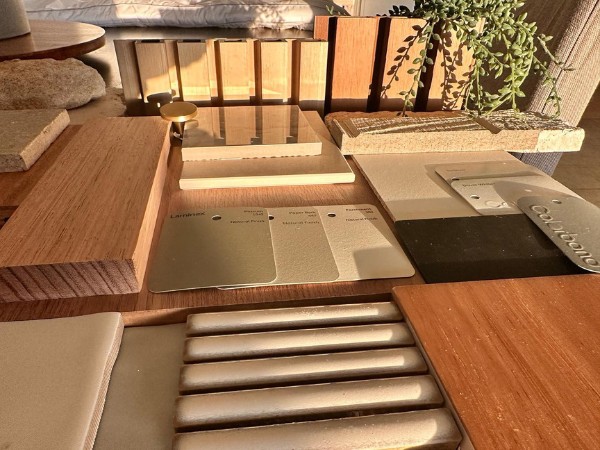
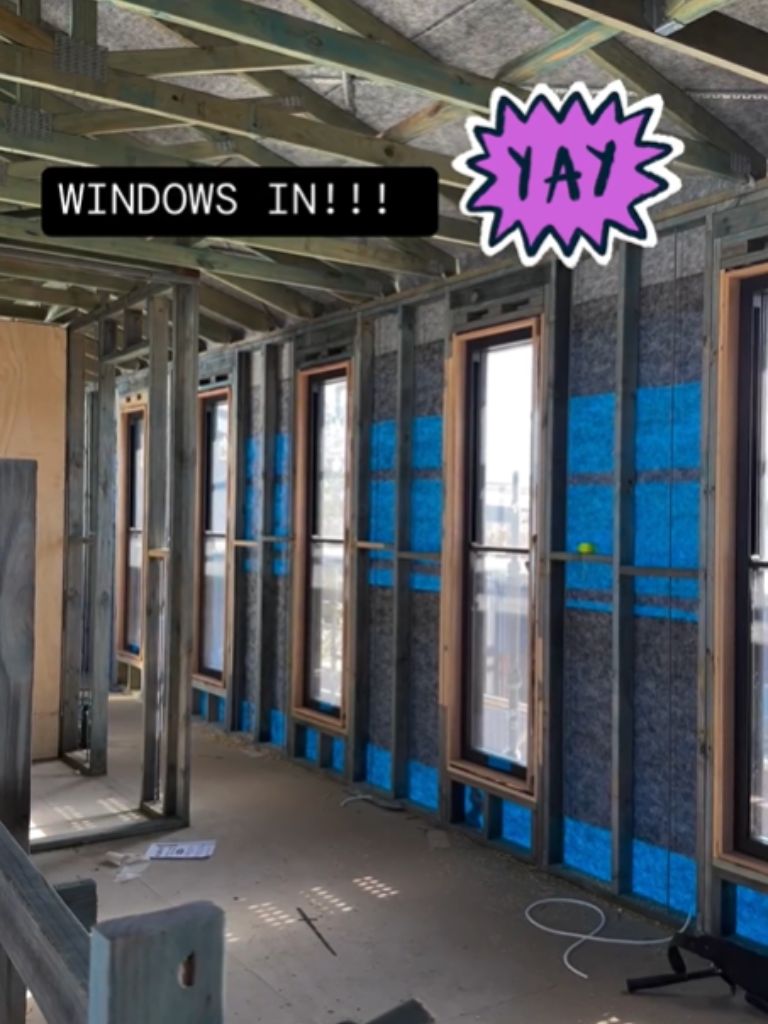
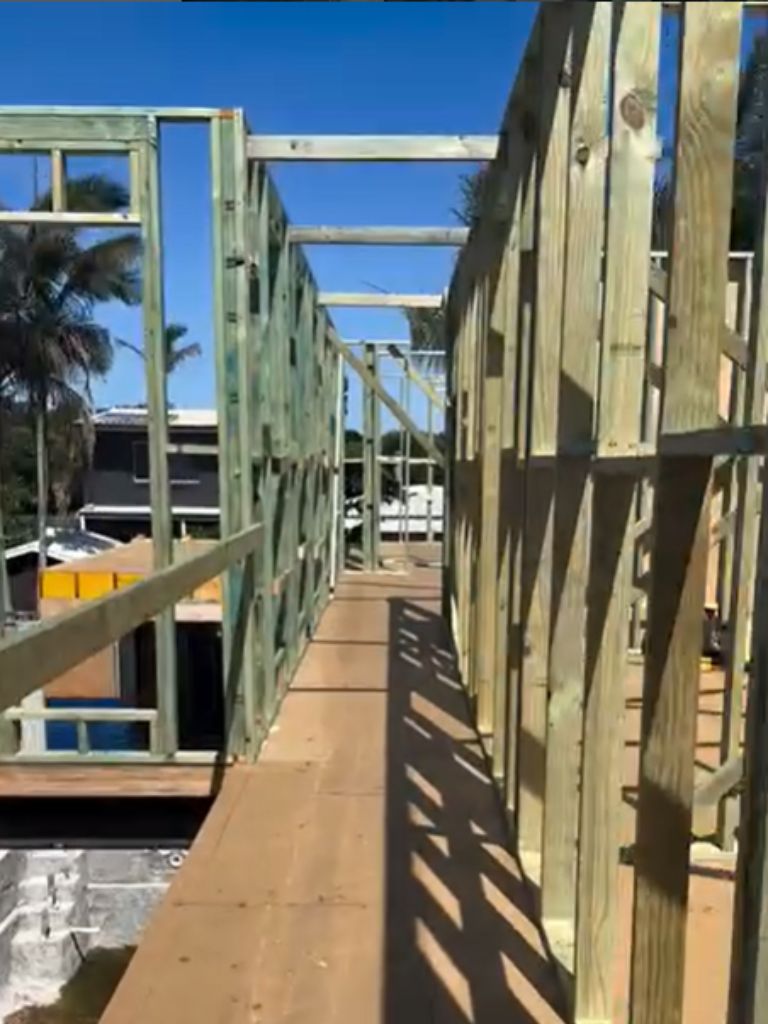
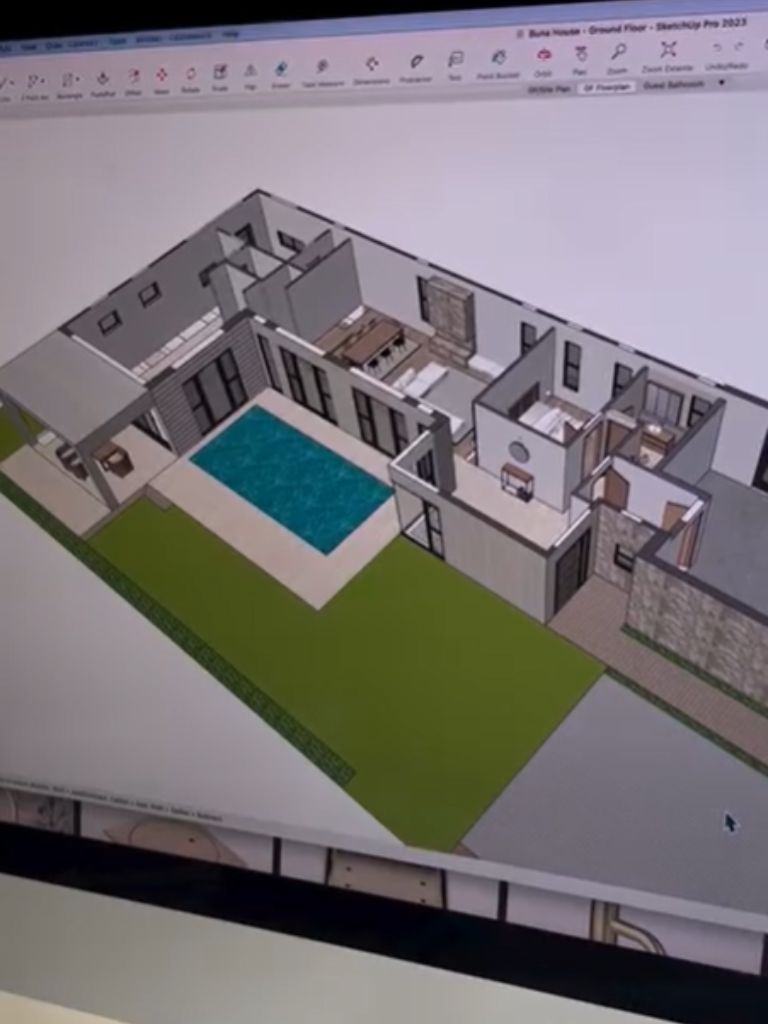
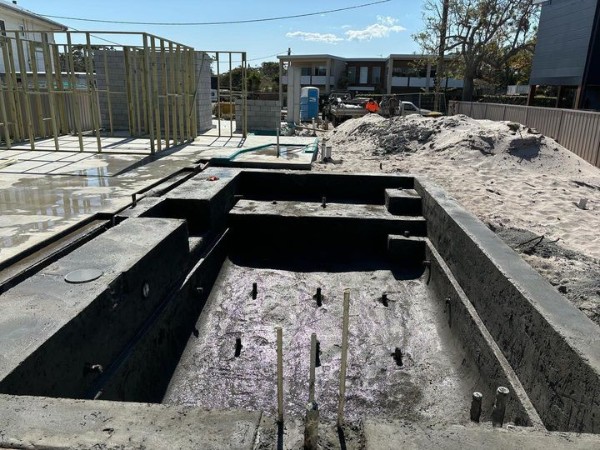
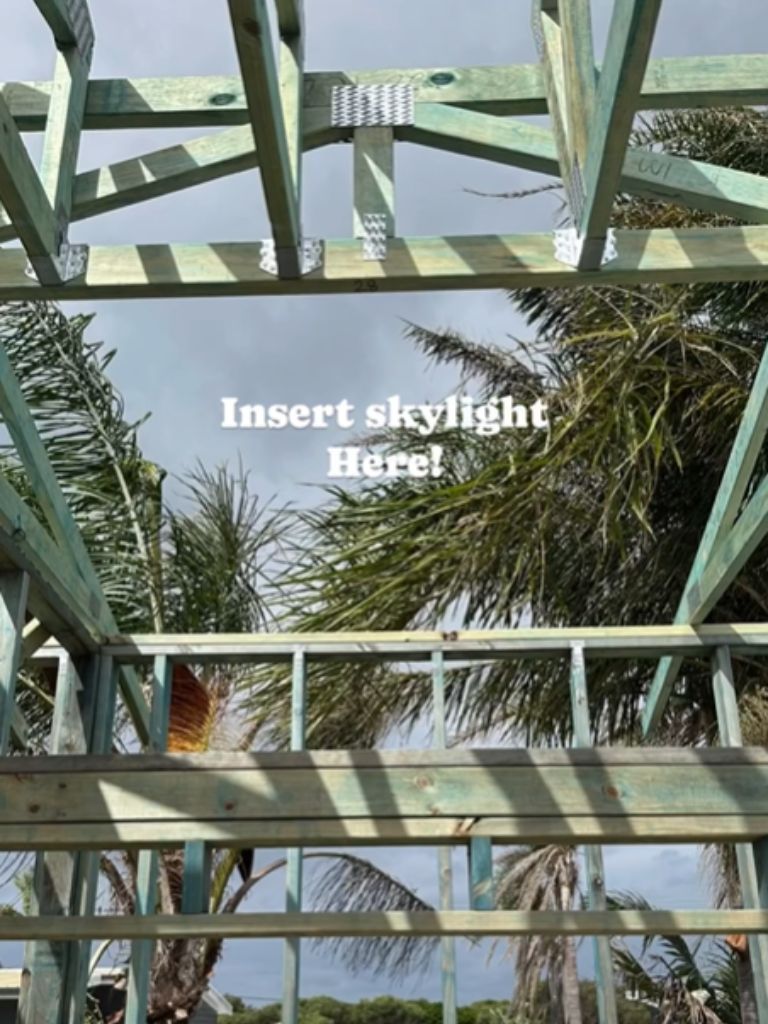
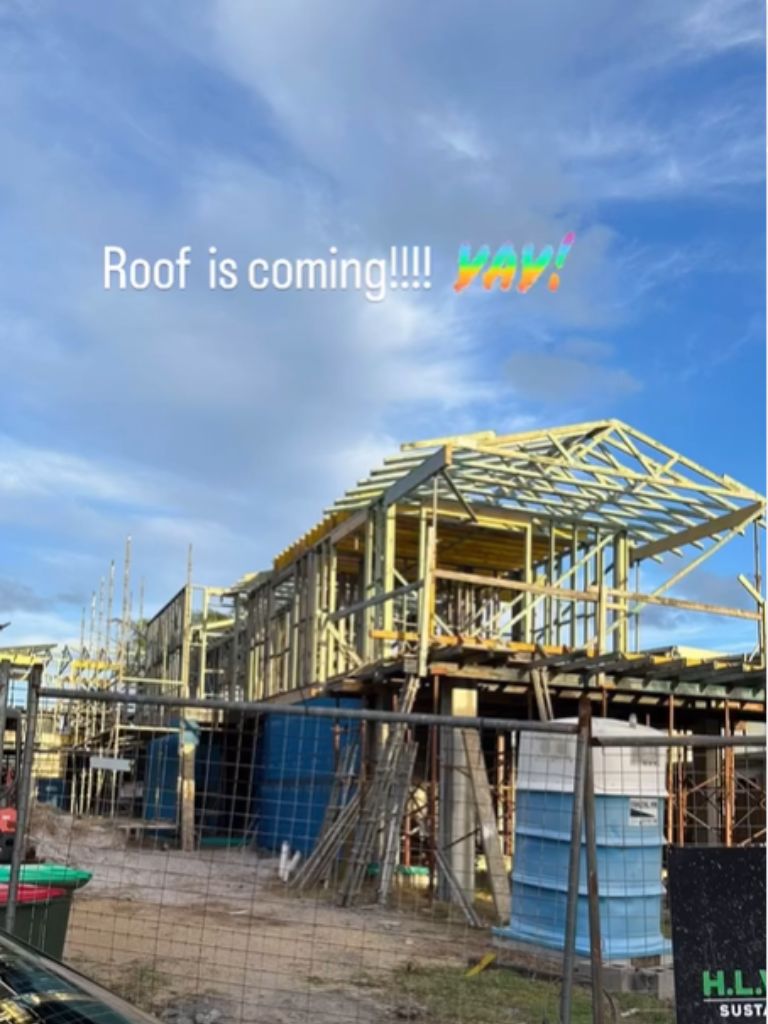

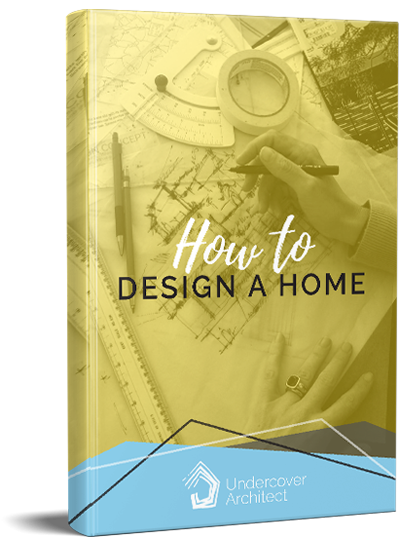
 With over 30 years industry experience, Amelia Lee founded Undercover Architect in 2014 as an award-winning online resource to help and teach you how to get it right when designing, building or renovating your home. You are the key to unlocking what’s possible for your home. Undercover Architect is your secret ally
With over 30 years industry experience, Amelia Lee founded Undercover Architect in 2014 as an award-winning online resource to help and teach you how to get it right when designing, building or renovating your home. You are the key to unlocking what’s possible for your home. Undercover Architect is your secret ally
Leave a Reply